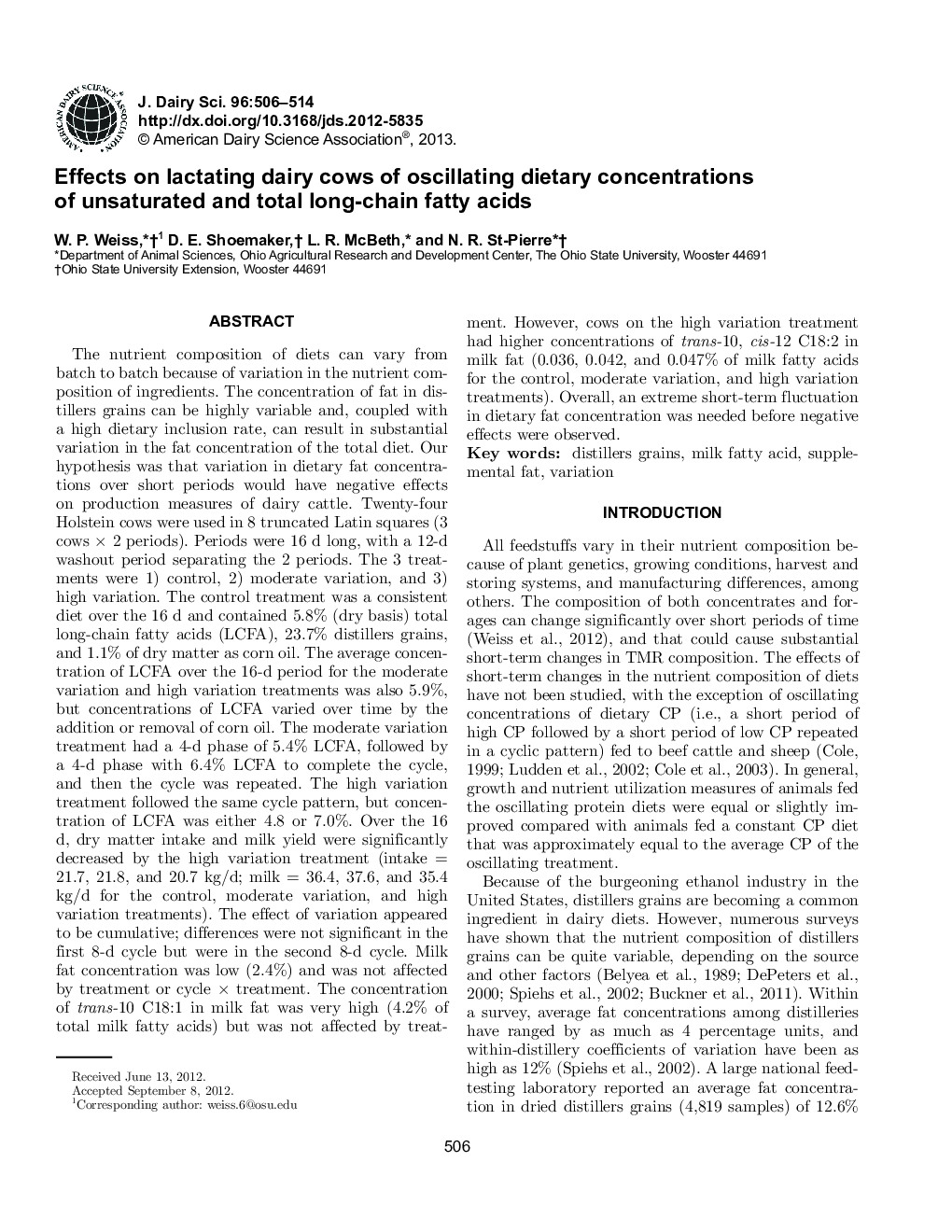| کد مقاله | کد نشریه | سال انتشار | مقاله انگلیسی | نسخه تمام متن |
|---|---|---|---|---|
| 10980607 | 1108071 | 2013 | 9 صفحه PDF | دانلود رایگان |
عنوان انگلیسی مقاله ISI
Effects on lactating dairy cows of oscillating dietary concentrations of unsaturated and total long-chain fatty acids
ترجمه فارسی عنوان
تأثیرات بر گاو شیرده شیردهی غلظت های غذایی نوسانی از اسیدهای چرب غنی اشباع نشده و کل
دانلود مقاله + سفارش ترجمه
دانلود مقاله ISI انگلیسی
رایگان برای ایرانیان
کلمات کلیدی
دانه های تقطیر، اسید چرب شیر چربی اضافی تغییر،
موضوعات مرتبط
علوم زیستی و بیوفناوری
علوم کشاورزی و بیولوژیک
علوم دامی و جانورشناسی
چکیده انگلیسی
The nutrient composition of diets can vary from batch to batch because of variation in the nutrient composition of ingredients. The concentration of fat in distillers grains can be highly variable and, coupled with a high dietary inclusion rate, can result in substantial variation in the fat concentration of the total diet. Our hypothesis was that variation in dietary fat concentrations over short periods would have negative effects on production measures of dairy cattle. Twenty-four Holstein cows were used in 8 truncated Latin squares (3 cows à 2 periods). Periods were 16 d long, with a 12-d washout period separating the 2 periods. The 3 treatments were 1) control, 2) moderate variation, and 3) high variation. The control treatment was a consistent diet over the 16 d and contained 5.8% (dry basis) total long-chain fatty acids (LCFA), 23.7% distillers grains, and 1.1% of dry matter as corn oil. The average concentration of LCFA over the 16-d period for the moderate variation and high variation treatments was also 5.9%, but concentrations of LCFA varied over time by the addition or removal of corn oil. The moderate variation treatment had a 4-d phase of 5.4% LCFA, followed by a 4-d phase with 6.4% LCFA to complete the cycle, and then the cycle was repeated. The high variation treatment followed the same cycle pattern, but concentration of LCFA was either 4.8 or 7.0%. Over the 16 d, dry matter intake and milk yield were significantly decreased by the high variation treatment (intake = 21.7, 21.8, and 20.7 kg/d; milk = 36.4, 37.6, and 35.4 kg/d for the control, moderate variation, and high variation treatments). The effect of variation appeared to be cumulative; differences were not significant in the first 8-d cycle but were in the second 8-d cycle. Milk fat concentration was low (2.4%) and was not affected by treatment or cycle à treatment. The concentration of trans-10 C18:1 in milk fat was very high (4.2% of total milk fatty acids) but was not affected by treatment. However, cows on the high variation treatment had higher concentrations of trans-10, cis-12 C18:2 in milk fat (0.036, 0.042, and 0.047% of milk fatty acids for the control, moderate variation, and high variation treatments). Overall, an extreme short-term fluctuation in dietary fat concentration was needed before negative effects were observed.
ناشر
Database: Elsevier - ScienceDirect (ساینس دایرکت)
Journal: Journal of Dairy Science - Volume 96, Issue 1, January 2013, Pages 506-514
Journal: Journal of Dairy Science - Volume 96, Issue 1, January 2013, Pages 506-514
نویسندگان
W.P. Weiss, D.E. Shoemaker, L.R. McBeth, N.R. St-Pierre,
